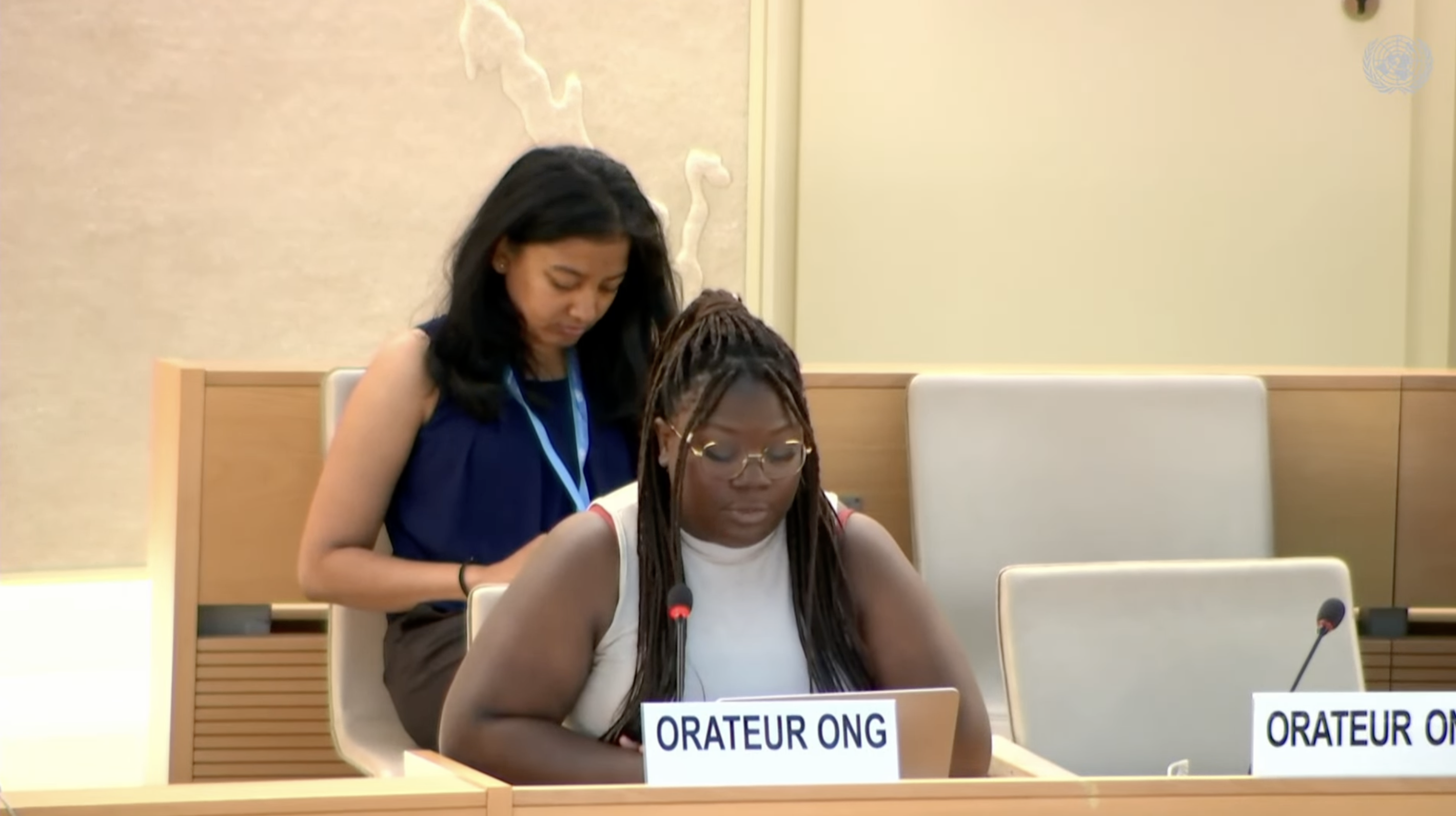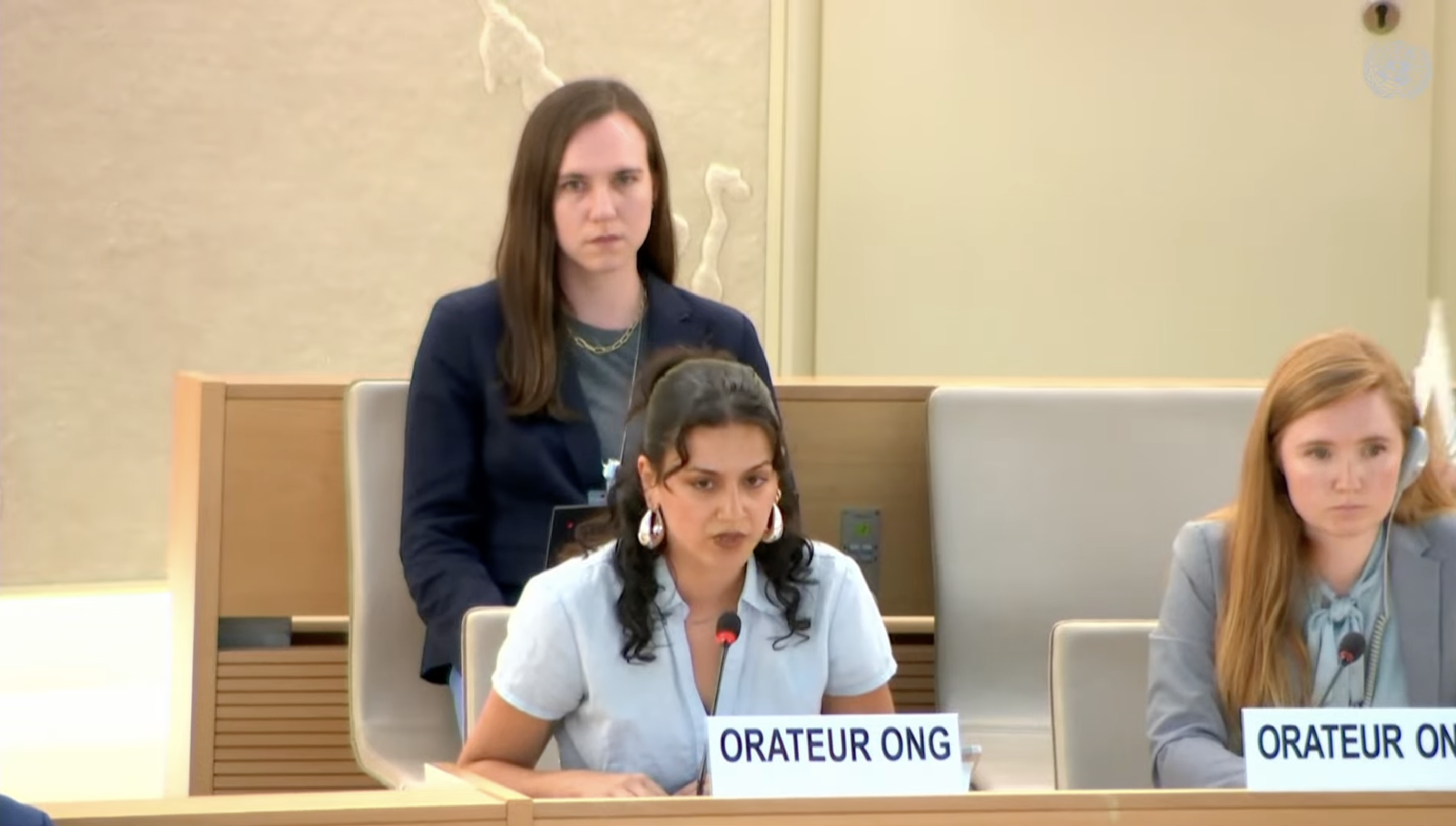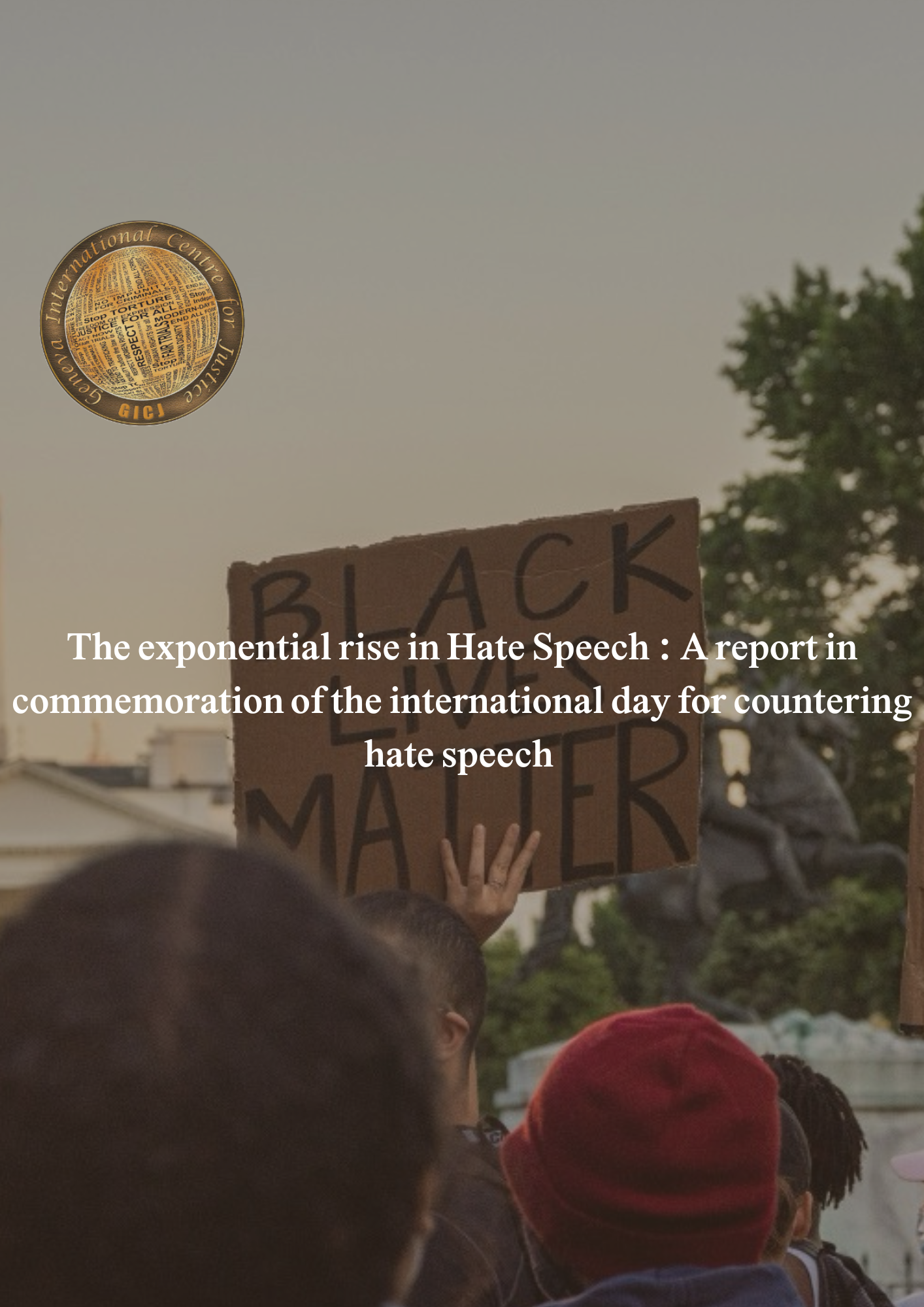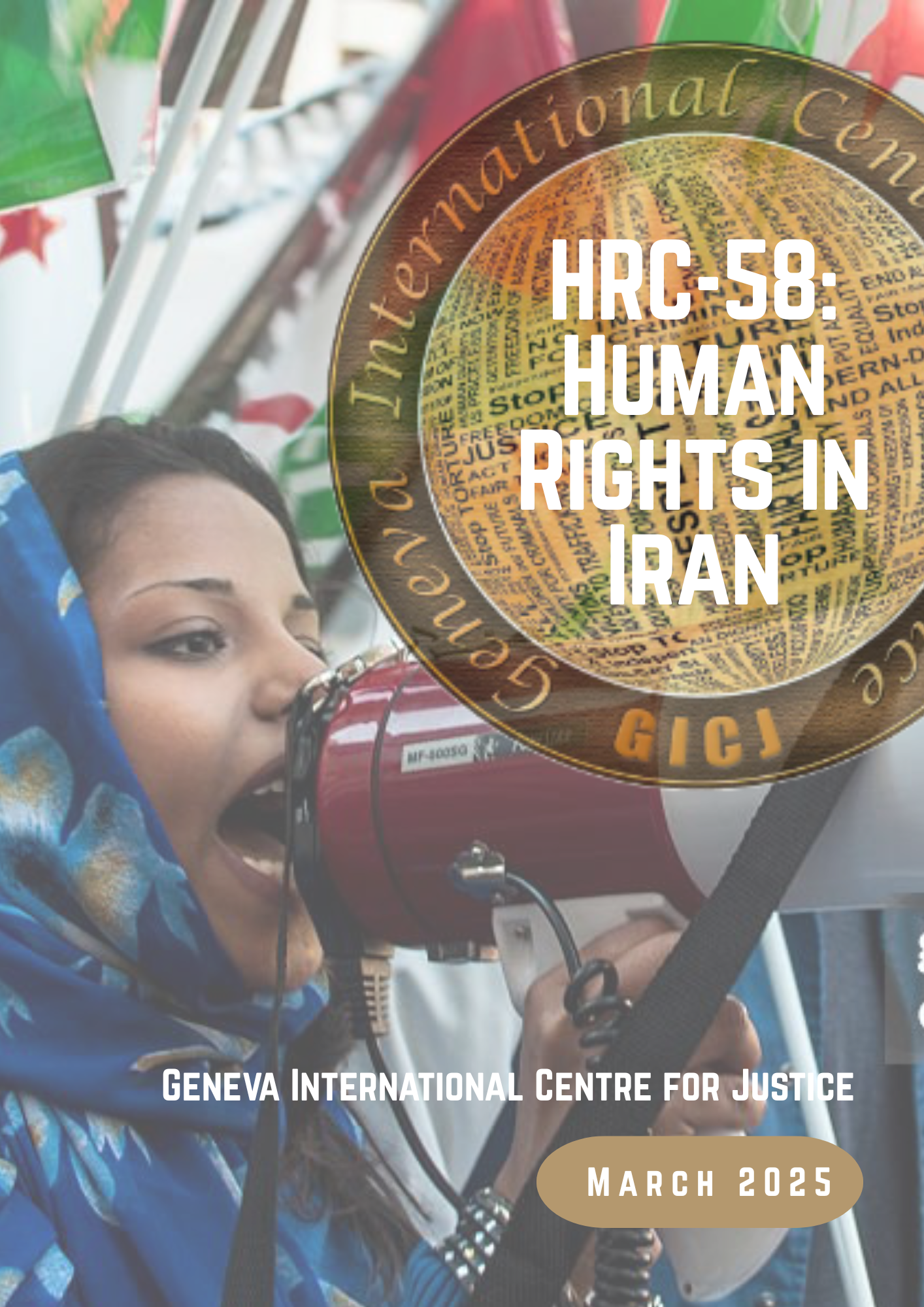United Nations Sustainable Development Goals: 5 Years to Go?
An analysis of the 2025 report

Image source: https://www.un.org/sustainabledevelopment/news/communications-material/
By Astrid Bochnakian / GICJ
On 14 July 2025, the United Nations Department of Economic and Social Affairs released The Sustainable Development Goals Report 2025, its annual analysis of global progress toward the 2030 Agenda. This report presents a comprehensive evaluation of the various targets of the Sustainable Development Goals (SDGs), using data and estimates from over 200 countries and territories.
The report is based on contributions from more than 50 international and regional organisations, national statistical offices, and other UN entities, ensuring both global comparability and regional specificity. It does not merely track numerical indicators, but also identifies emerging trends, structural barriers, and the systemic risks that threaten sustainable development. In doing so, the SDG Report functions as both a monitoring tool and a political signal, shaping debates and informing policymaking at national and international levels.
The 2025 edition is particularly significant because it arrives at the critical five-year mark before the 2030 deadline, making it a key moment to take stock of achievements, shortcomings, and the urgency of action required. Beyond numbers, the report highlights the interconnected nature of global challenges, showing how progress in one area can be undermined by setbacks in others, and stressing the need for integrated solutions.
What are the SDGs?
The UN SDGs are a set of 17 objectives adopted in 2015 as part of the 2030 Agenda for Sustainable Development [1]. They provide a comprehensive framework that guides national and international policies in addressing the most pressing global challenges, including poverty, inequalities, climate change, environmental degradation, peace, and justice. Each of the goals is interconnected, and the set is designed to be achieved by 2030, emphasising the importance of global partnership and collective action.
The Sustainable Development Goals Report 2025
Since the SDGs were adopted ten years ago, this year's report offers key insights into their implementation, with the hindsight necessary to properly assess them. Altogether, the report notes a global increase in access to social protection, education, electricity and internet connectivity, but progress remains limited by conflicts, climate change, tensions and economic fluctuations. According to Secretary-General António Guterres, “This year’s SDGs Report finds that only 35% of SDGs targets are on track or making moderate progress. Nearly half are moving too slowly and, alarmingly, 18% are in reverse.” [2] This assessment calls for an increased effort in implementing the SDGs across the board to meet the 2030 targets.
This year’s report also highlights the momentum generated by the Pact for the Future, a landmark agreement adopted in September 2024 by the United Nations General Assembly, outlining 56 concrete actions to reinvigorate multilateral cooperation and address today’s most pressing global challenges, including sustainable development, peace and security, digital governance, climate action, and youth inclusion. The Pact represents a shared commitment by UN Member States to build a more just, inclusive, sustainable, and peaceful world, directly linking it to the SDGs.
The report assesses the various targets for each SDG as follows:
SDG 1: No Poverty
SDG 1 aims to eradicate extreme poverty in all its forms and everywhere. Poverty is not only a lack of income; it limits access to education, healthcare, and opportunities. Thus, ending poverty is essential for global stability and human dignity.
The report highlights that progress regarding the reduction of poverty has stalled due to crises, including conflicts. While over half of the world’s population receives social benefits and working poverty rates have decreased globally, extreme poverty still affects 1 in 10 people worldwide, highlighting that progress is still needed to meet the 2030 goal of eradicating poverty, especially in emerging and developing economies. This calls for a significant acceleration of efforts, with massive investments in essential services and the adoption of policies aiming at eradicating poverty.
SDG 2: Zero Hunger
SDG 2 focuses on ending hunger and ensuring access to safe, nutritious, and sufficient food all year round. Hunger affects health, development, and productivity. It was included to promote food security, especially as climate change, conflict, and inequality continue to worsen global malnutrition.
Hunger has sharply increased since 2019 worldwide, affecting 1 in 11 people in 2023, with 2 billion people facing moderate to severe food insecurity. This is linked to a wide range of factors, including conflicts, climate change and economic insecurity, which are further compounded by challenges such as inequalities and lack of access to food. Additionally, the report notes a slowing of global progress in child nutrition, even signs of a reversal. Meeting the 2030 target requires a strengthening of food systems, accelerating efforts and coordinating strategies, including aligning global efforts to national policies.
SDG 3: Good Health and Well-being
SDG 3 seeks to ensure healthy lives for all and promote well-being at every stage of life. Health is a basic human right and the foundation for development. Preventable diseases, maternal mortality, and lack of access to basic healthcare remain widespread and deeply inequitable.
Global health progress shows signs of slowing as inequalities persist, including with underfunded systems. The decline in maternal mortality worldwide remains insufficient to meet the target, and vaccination remains off track. Infectious and non-communicable diseases also persist as a major threat, exacerbated by risk factors such as tobacco use, air pollution and poor diet, as the health workforce is faced with a growing global shortage, projected to worsen over the upcoming years. Those challenges to health and well-being demand investments and equity globally to ensure health resilience, including by increasing efforts and addressing disparities.
SDG 4: Quality Education
SDG 4 is meant to ensure inclusive and equitable education and promote lifelong learning opportunities. Education is a powerful tool to break the cycle of poverty and promote gender equality, civic participation, and innovation.
The 2025 report shows that progress in increasing access to education remains off track for 2030, and is even slowing compared to previous years, despite rising completion rates. Women remain disproportionately affected by illiteracy, with disparities driven not only by gender but also by wealth and geography. Low-income countries and sub-Saharan Africa are disproportionately affected by illiteracy and lack of access to education. Ensuring access to quality education globally requires implementing inclusive policies and financing, both meant to increase various drivers of quality education, including legal guarantees and basic school infrastructure.
SDG 5: Gender Equality
SDG 5 aims to eliminate discrimination and violence against women and girls and ensure equal rights and opportunities. Gender inequality is a persistent barrier to sustainable development, affecting health, income, safety, and participation in public life.
Although discriminatory laws, gender norms, under-representation and harmful practices such as child marriage and genital mutilation persist globally, there has been progress towards gender equality. The report describes the progress of legal reforms towards advancing women’s rights, but acknowledges that significant gaps and challenges persist, including barriers such as weak legal protection in many countries and the lack of full decision-making power over their health. Reaching SDG 5 thus calls for comprehensive laws and public finance systems to ensure integrated and gender-responsive policies addressing the various barriers to gender equality.
SDG 6: Clean Water and Sanitation
SDG 6 promotes universal access to safe drinking water and adequate sanitation. Billions of people still lack these basic services, leading to preventable disease and death. Water access is a human right and vital for public health and dignity.
The report highlights steady progress in access to drinking water, sanitation and hygiene services, but gaps remain, with 2.2 billion people still lacking access to safe drinking water, and 3.4 billion people being without access to sanitation. With barriers such as pollution, uneven water stress, knowledge gaps in water quality, and weak governance, SDG 6 remains off track for 2030. Given that agriculture is both a driver of and affected by water stress, ensuring equal access to clean water and sanitation globally entails comprehensive mechanisms, innovation, governance and partnerships across all sectors and at all levels, including a better implementation of transboundary water cooperation.
SDG 7: Affordable and Clean Energy
SDG 7 seeks to ensure access to reliable, sustainable, and modern energy for all. Clean energy reduces pollution and supports progress in all sectors. Yet, many communities still live without electricity or rely on harmful fuels for cooking and heating.
This goal has considerably progressed according to the report, but still needs a substantial and accelerated increase in clean-energy investment, especially in developing countries. Uneven progress and regional inequalities remain key barriers to global access to affordable and clean energy, which is a driving factor for other SDGs, including gender equality and access to education. The report also notes that the share of renewable energy has increased but remains off track for 2030. Thus, policies and increased financing of clean and renewable energies on a global level are required to scale up efforts.
SDG 8: Decent Work and Economic Growth
SDG 8 promotes sustained, inclusive economic growth and decent work for all. Employment must be productive, safe, and fairly paid. Tackling youth unemployment, informal labour, and job insecurity is essential to reduce inequality and strengthen economies.
Global economic growth is slowing and marked by disparities, especially in least developed countries (LDCs). The global decrease in unemployment rates is hindered by the high rates of informal employment, especially in sub-Saharan Africa. Additionally, uncertainties over trade limit the projection of GDP growth for the year 2025. Despite the post-pandemic rebound in productivity, gaps remain, curbing decent work opportunities and wage increases. Some targets of SDG 8 remain off track, namely the abolition of child labour globally. Meeting those goals demands comprehensive strategies, targeted investment, structural reform and policies boosting productivity.
SDG 9: Industry, Innovation and Infrastructure
SDG 9 supports building resilient infrastructure, fostering innovation, and promoting inclusive industrial development. Infrastructure and technology are key to solving global problems and driving economic transformation, particularly in low-income countries.
Since 2015, progress in expanding infrastructure has led to industrial growth and innovation, but stark disparities remain due to systemic barriers and the marginalisation of LDCs in the trade of manufactured goods. The increasing energy demand has also resulted in a new high in emissions, and manufacturing employment has decreased in most regions due to growing innovation. Although 5G coverage has globally increased, 4% of the world’s population remains without access to mobile broadband, further stressing disparities for other SDGs. Fulfilling the 2030 Agenda necessitates increased investments in research and development globally, increased cooperation and more inclusive financing.
SDG 10: Reduced Inequalities
SDG 10 addresses inequality within and among countries, aiming to promote social, economic, and political inclusion. Inequality undermines social cohesion, limits opportunity, and is a major barrier to sustainable development.
There has been a global progress in reducing inequalities since 2015. Yet disparities remain among regions and countries, and discrimination has increased worldwide, especially against women, persons with disabilities, the poorest, and those with lower education levels. The report notes that the refugee population under the mandate of the High Commissioner for Refugees (UNHCR) has increased globally, exacerbating humanitarian stress. It also highlights that the decline of the income share in GDP in most regions entails that wages are not increasing, but rather, profit is going to the capital, further increasing the gap between workers and capital owners. Therefore, further reducing inequalities requires increased support for vulnerable populations, combating discrimination and structural reform.
SDG 11: Sustainable Cities and Communities
SDG 11 focuses on making cities inclusive, safe, resilient, and sustainable. With urban populations growing rapidly, this goal responds to challenges like overcrowding, pollution, housing shortages, and vulnerability to natural disasters.
Reaching SDG 11 is thwarted by the crisis in housing affordability, with 1.2 billion people living in slums or informal settlements, especially in sub-Saharan and Northern Africa and Western Asia. Urban vulnerability is also increased by climate threats and damages, despite growing investment towards climate resilience. Although national urban policies have increased, gaps remain in many sectors, namely in implementation at the local level. Addressing climate threats and housing gaps calls for coordinated investments in affordable housing and climate-resilient infrastructure, as well as inclusive governance.
SDG 12: Responsible Consumption and Production
SDG 12 aims to ensure sustainable consumption and production patterns. Current resource use is unsustainable, leading to environmental degradation and waste. Instead, this goal promotes efficiency, circular economies, and consumer responsibility.
As food and electronic waste have reached unprecedented levels at a time of rising consumption, exacerbating global resource inequalities, the report notes institutional momentum towards sustainable consumption and production. Sustainability reporting has become a key standard for large companies globally, and States have increasingly been compliant with transparency obligations on hazardous waste and chemicals. Yet the high rates of daily food waste have a stark impact on the environment, across all income levels, as well as the record-high levels of electronic waste. Implementing global change entails increased efforts, including coordination across the public and private sectors, a role for civil society, stronger regulations globally, investments and partnerships.
SDG 13: Climate Action
SDG 13 calls for urgent measures to combat climate change and its impacts. Rising temperatures, sea levels, and extreme weather events threaten all life. This goal reinforces the need for mitigation, adaptation, and resilience on a global scale.
Climate change has accelerated in 2024, reaching around 1.55°C above the pre-industrial level. Stressing that current levels of emissions indicate that the world is unlikely to meet the 2030 target, it acknowledged the decrease in global disaster deaths due to effective investments, despite the increased vulnerability of populations to climate change-related extreme events. Yet, 2024 was the hottest year recorded in 175 years, with more frequent and more intense extreme weather. Efficient and sustainable climate action requires accelerating efforts against climate change, in cutting emissions, and in course correcting, as well as investing in climate adaptation and resilience.
SDG 14: Life below Water
SDG 14 works to conserve oceans, seas, and marine resources. Oceans regulate climate and provide food, oxygen, and livelihoods. Overfishing, plastic pollution, and acidification threaten marine ecosystems and the people who depend on them.
Oceans and seas face mounting threats from overexploitation of resources, illegal practices, climate change and acidification. Although fishing management has improved, challenges to sustainability, record heat in oceans have led to biodiversity degradation, namely coral bleaching. Acidification, which results from the absorption of CO2 emissions, also impacts marine life and weakens coastal protection, especially in the Indian and Pacific oceans. Preserving marine biodiversity in oceans and seas requires ocean stewardship, meaning it entails responsible use, management and protection of oceans and their resources. This solution relies on sustained global cooperation.
SDG 15: Life on Land
SDG 15 promotes the sustainable use of terrestrial ecosystems, including forests, wetlands, and biodiversity. These ecosystems support life and regulate climate, but they are being destroyed at an alarming rate due to human activity and exploitation.
The 2025 report highlights hindered progress in protecting biodiversity on land. Yet, deforestation, which is driven by agricultural expansion, has slowed despite climate pressure. Over 47,000 species are threatened by extinction, which results in the loss of biodiversity and threatens humanity. Significant progress has been made in biodiversity conservation through protected areas. Preserving biodiversity on land entails scaling up efforts and significantly investing in restoration to combat land degradation, which has a wide impact on the environment and human life.
SDG 16: Peace, Justice and Strong Institutions
SDG 16 advocates for peaceful, inclusive societies, access to justice, and accountable institutions. Violence, corruption, and weak governance undermine development and human rights, and must be addressed to build stable, resilient communities.
In 2024, 1 life was lost to conflict every 12 minutes, mostly women and children, indicating a surge in civilian casualties of armed conflicts, especially in Gaza. While access to justice is still elusive, with many detained without proper sentencing. Globally, journalists and human rights defenders are being targeted, whether killed or jailed. Decline in global homicides remains off track to meet the 2030 goal. There has been significant progress in building effective, accountable and transparent institutions, but challenges remain, including limited legally guaranteed access to information, lack of independent national human rights institutions, unreliable public service delivery and lack of trust in governments. Additionally, human trafficking, particularly of children, has increased. Improving peace and justice, and strengthening institutions entails promoting inclusive governance, protecting civic space and addressing root causes of conflict and injustice.
SDG 17: Partnerships for the Goals
SDG 17 emphasises the importance of global cooperation and partnership to achieve the other goals. It highlights the need for financing, technology transfer, policy coordination, and solidarity between countries, sectors, and communities.
In 2024, record debt servicing for middle- and low-income countries has hit a record high. The share of developing countries in global trade remains stagnant, although increasing it could drive sustainable development. Official development assistance has globally decreased, a trend which is expected to continue, yet foreign direct investment and remittance flows have increased. Internet use has increased worldwide, but remains limited, with 2.6 billion people still offline. With ten years of hindsight, increased partnerships call for a renewed international cooperation and sustainable investments to even out the gaps within and between goals.
Conclusion
The Sustainable Development Goals Report 2025 provides a comprehensive yet nuanced picture of the global progress towards the 2030 Agenda for Sustainable Development. Despite the notable advances made over the past ten years in access to social protection, education, electricity and internet connectivity, efforts must be scaled up over the next five years to bring all targets on ck and ensure the 2030 Agenda can be fulfilled by all countries. Most notably, progress is stalled by persistent challenges such as armed conflicts, climate change, economic instability and widening inequalities.
With only five years remaining, the report underscores the urgency of accelerating action across all goals and addressing the interconnected barriers that hinder progress. Achieving the SDGs by 2030 will require coordinated global efforts, stronger and sustainable partnerships, and substantial investment to ensure that no goal and no community is left behind.
Geneva International Centre for Justice (GICJ) calls on all States to take all the necessary action to increase their efforts in implementing the SDGs and bring systemic change, especially regarding food systems, energy, digital connectivity, education, jobs and social protection, and climate biodiversity. As the SDGs are a commitment to uphold human dignity, GICJ urges all States to use the momentum of the 2024 Pact for the Future to improve international partnerships and ensure they individually and collectively meet the targets of the 2030 Agenda for Sustainable Development, as the SDGs not only seek to address issues faced by the current generation but also ensure a better future for the generations to come. GICJ also reiterates the importance of cooperation in addressing disparities between countries and regions, ensuring that the SDGs can be effectively implemented globally.
Read the full report here.
[1] A/RES/70/1 - Transforming our world: the 2030 Agenda for Sustainable Development
[2] The Sustainable Development Goals Report 2025, Foreword












